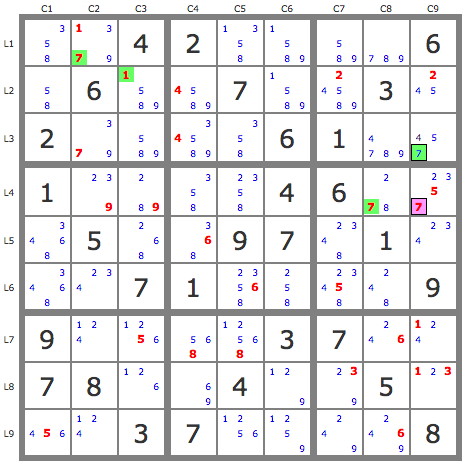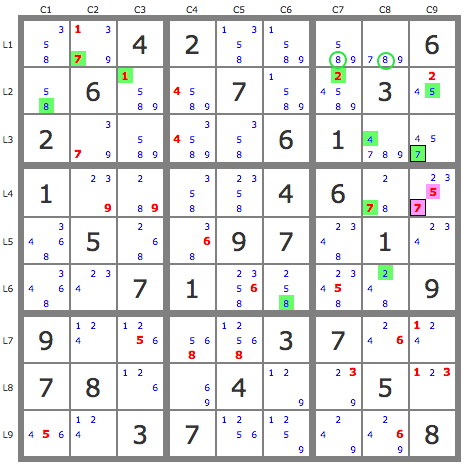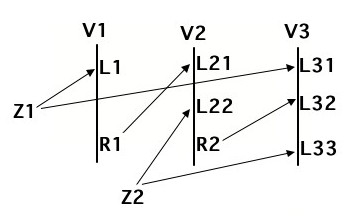denis_berthier wrote:I translate this into:
- Code: Select all
1) choose a candidate A from a bivalue cell.
2) if T&E(BRT or S, 1, A) finds an error, then eliminate A
3) otherwise:
3a) either give up and goto 1)
3b) or go one level of T&E deeper, possibly iterating (which includes possibly going still deeper in T&E).
No criterion is given for choosing between 3a and 3b.
No criterion is given for choosing between the Zi's.
Misinterpretation (translation) of what I wrote.
Point 2) means that the construction sequence of the anti-track P'(E) has highlighted a candidate Z who sees both E and a candidate B of P'(E). This candidate B is the last candidate on the right of the sequence, i.e. the anti-track is no longer developed beyond it. It has nothing to do with T&E which develops the sequence until it finds an incompatibility.
Point 3b, consists in better defining the target if point 2) has not given anything at the end of a certain "reasonable" development of the anti-track. We do this by eliminating one of the Zi in addition to A and we continue as in 2) or 3b).
Reasonable here means that one imposes on oneself a number of candidates (from the right) not to be exceeded, because the goal is not to do T&E. Personally I give myself a limit of 10 candidates (from the right) and without result at this stage I come back to 3a).
The choice of the Zi to be eliminated is made so that the construction sequence continues with the objective of arriving at a candidate B who sees the target.
It should be noted that a too low limit obliges to a greater number of application of this procedure, and by hand this is more tedious and even inefficient because the goal is not like Sudorules to seek the simplest resolution.
While waiting to give you the complete resolution of the "fish-on-wave 9.3" puzzle you are asking me for, here is an example of elimination to better explain my procedure.
To simplify my work, I only give you the puzzle with the anti-track marking as I practice it by hand and some explanations.
I treat a first elimination of "fish-on-wave 9.3".
I choose E=7r4c9 (purple) and I trace P'(E) which is limited to 4 candidates (green), which gives no result. But the Zi are 235r4c9 and the target is thus among these three candidates.
P'(E) : (-57r4c9) =>[7r3c9 and 5r2c9->8r2c1]->2r2c7->4r3c8->8r1c78->8r6c6->2r6c8 => -2r4c9.
Compare with the first whip [8] of your resolution.
Robert




